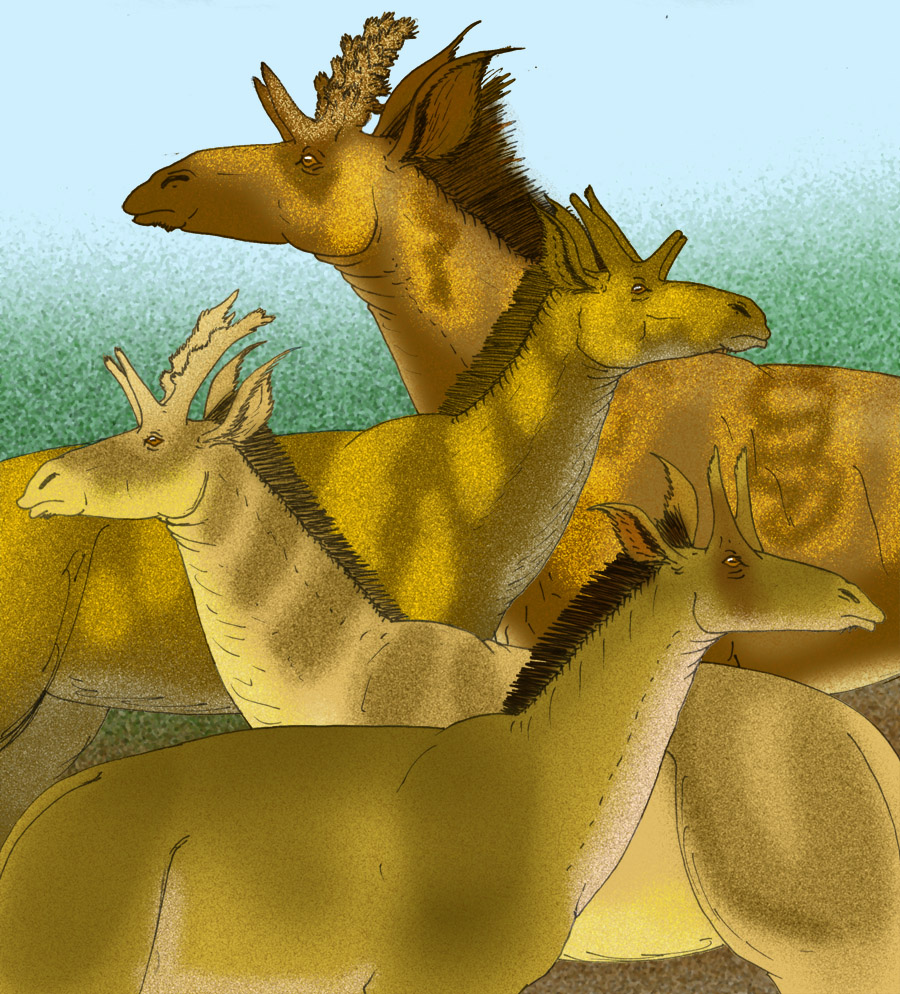Shansitherium on:
[Wikipedia]
[Google]
[Amazon]
''Shansitherium'' ("beast of
 The genus consists of the following species:
* ''
The genus consists of the following species:
* ''
Shanxi
Shanxi (; ; formerly romanised as Shansi) is a landlocked province of the People's Republic of China and is part of the North China region. The capital and largest city of the province is Taiyuan, while its next most populated prefecture-lev ...
")Killgus, H., 1922. Die unterpliocaenen chinesischen Säugetierreste der Tafelschen Sammlung zu Tübingen (Doctoral dissertation) is an extinct genus
Genus ( plural genera ) is a taxonomic rank used in the biological classification of living and fossil organisms as well as viruses. In the hierarchy of biological classification, genus comes above species and below family. In binomial n ...
of superficially moose
The moose (in North America) or elk (in Eurasia) (''Alces alces'') is a member of the New World deer subfamily and is the only species in the genus ''Alces''. It is the largest and heaviest extant species in the deer family. Most adult ma ...
-like or antelope
The term antelope is used to refer to many species of even-toed ruminant that are indigenous to various regions in Africa and Eurasia.
Antelope comprise a wastebasket taxon defined as any of numerous Old World grazing and browsing hoofed mamm ...
-like giraffids from the late Miocene
The Miocene ( ) is the first geological epoch of the Neogene Period and extends from about (Ma). The Miocene was named by Scottish geologist Charles Lyell; the name comes from the Greek words (', "less") and (', "new") and means "less recent" ...
epoch
In chronology and periodization, an epoch or reference epoch is an instant in time chosen as the origin of a particular calendar era. The "epoch" serves as a reference point from which time is measured.
The moment of epoch is usually decided by ...
of Shanxi
Shanxi (; ; formerly romanised as Shansi) is a landlocked province of the People's Republic of China and is part of the North China region. The capital and largest city of the province is Taiyuan, while its next most populated prefecture-lev ...
Province, China. They are closely related to the genus ''Samotherium
''Samotherium'' ("beast of Samos") is an extinct genus of Giraffidae from the Miocene and Pliocene of Eurasia and Africa. ''Samotherium'' had two ossicones on its head, and long legs. The ossicones usually pointed upward, and were curved backward ...
''.
Species
Shansitherium fuguensis
''Shansitherium'' ("beast of Shanxi")Killgus, H., 1922. Die unterpliocaenen chinesischen Säugetierreste der Tafelschen Sammlung zu Tübingen (Doctoral dissertation) is an extinct genus of superficially moose-like or antelope-like giraffids fr ...
''
* ''Shansitherium tafeli
''Shansitherium'' ("beast of Shanxi")Killgus, H., 1922. Die unterpliocaenen chinesischen Säugetierreste der Tafelschen Sammlung zu Tübingen (Doctoral dissertation) is an extinct genus of superficially moose-like or antelope-like giraffids fr ...
''
* '' Shansitherium quadricornis''Bohlin, K., 1926. Über den veränderlichen Stern BC (7.1926) Ophiuchi. Astronomische Nachrichten, 229, p.65.
References
External links
* Prehistoric giraffes Miocene mammals of Asia Miocene even-toed ungulates Miocene genus extinctions Prehistoric even-toed ungulate genera {{Paleo-eventoedungulate-stub